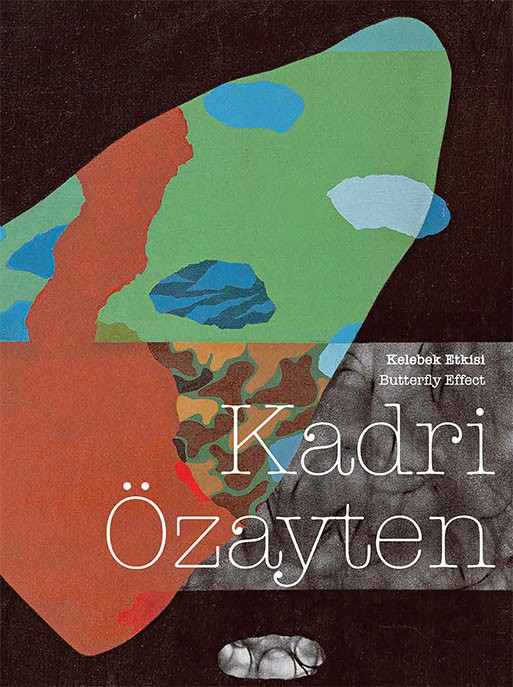Butterfly Effect is a retrospective analysis of the oeuvre of Kadri Özayten. Spanning from the 1970s to the beginning of 2000, and exemplary presenting drawings, prints, paintings, as well as collages and videos, the exhibition gives an insight into the work of a remarkable artist who knew how to relate art to politics through a brilliant balancing of aesthetic and intellectual matters.
The show at Milli Reasürans as well as the accompanying catalogue are structured according to a chronological order. Starting in the early 1970s, Kadri Özayten’s work is characterized by paintings and prints that are mainly based on his own biography. Here, emotionally driven figurative pieces reflect on his personal life. Also during this time, the artist’s interest in Anatolian iconography can be recognized through the combination of traditional motives with modern aesthetics. Later, the works of the 1980s are characterized by personal traumata caused by socio-political incidents. Here, besides a rather dark range of colors, nameless blindfolded figures often appear in vast and anonymous landscapes. Özayten’s notion of composition and the painterly treatment of his protagonists aim towards simplification, minimalization and abstraction. This phase can also be understood as an interstation between the early pieces and the later, often interdisciplinary works of the 1990s, in which the artist directly reacts to the wars of the Balkan and the Gulf Area as well as to social and political national conflicts. It is also this time, when Kadri Özayten besides his paintings focuses on collages, time- and site-specific installations as well as on pieces that were influenced by Fluxus and its process-oriented production methods. Also experiments with non-objective art and video art can be found during this period. The 1990s mean also the phase, where the main symbols of Özayten’s oeuvre appear: Butterflies, pebble stones, paper airplanes and camouflage textures became then his personal icons of hope and anti-war. Indeed, in this highly tensed period, when wars and crisis are shaking the world around him, a strong socio-political interest and sincere humanist engagement becomes the main forces that propels his work. After 2000, the artist again shifts his focus onto painting, and creates an important series of large pieces, in which he summarizes the artistic efforts of 40 years of intensive research and hard work.






